Vegetable Acid
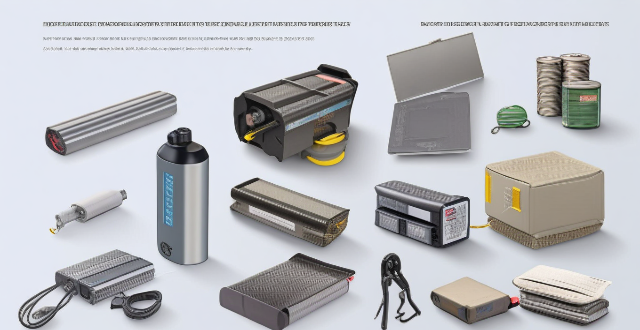
How long does a lead-acid battery last ?
Lead-acid batteries are commonly used in various applications, including vehicles, uninterruptible power supplies (UPS), and renewable energy storage systems. The lifespan of a lead-acid battery depends on several factors, such as its type, usage, and maintenance. In this article, we will discuss the typical lifespan of lead-acid batteries and provide tips for extending their service life.
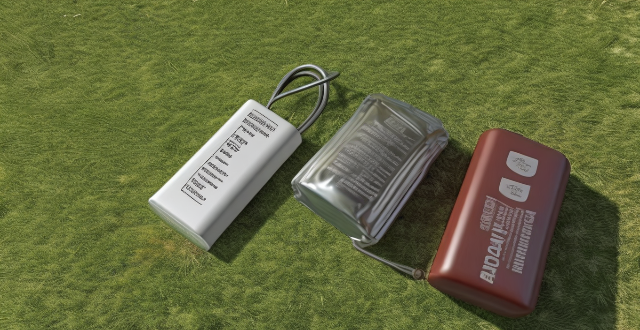
Can you recharge a dead lead-acid battery ?
Recharging a dead lead-acid battery is possible, but it depends on the condition of the battery and how long it has been discharged. Here are some steps to follow when attempting to recharge a dead lead-acid battery: Check the battery's condition, determine the battery's voltage, choose the right charger, connect the charger to the battery, monitor the charging process, and test the battery after charging. In summary, recharging a dead lead-acid battery is possible as long as the battery is in good condition and the correct charging procedures are followed.

What is the difference between a sealed and unsealed lead-acid battery ?
Sealed lead-acid batteries are maintenance-free and have a longer lifespan than unsealed batteries. They also have a lower self-discharge rate and no risk of acid spillage. Unsealed lead-acid batteries require regular maintenance, including checking the electrolyte level and adding distilled water when necessary. They generally have a shorter lifespan and a higher self-discharge rate compared to sealed batteries. There is also a risk of acid spillage if the battery is damaged or mishandled.

What are the safety precautions to take when handling lead-acid batteries ?
When dealing with lead-acid batteries, it's crucial to follow certain safety precautions to protect yourself and your surroundings. Here are some essential guidelines: ### Personal Protective Equipment (PPE) - Always wear goggles to protect your eyes from acid splashes or lead particles. - Use acid-resistant gloves to prevent skin contact with battery acid. - Wear long sleeves and an acid-resistant apron to protect your clothing and skin. - Consider using a face shield if working in an environment where battery explosion is possible. ### Ventilation - Ensure proper ventilation when charging, testing, or working near lead-acid batteries. - Avoid breathing in the fumes released by the batteries. ### Handling - Lift batteries carefully to avoid straining your back or dropping them. - Keep batteries upright to prevent acid leakage. - Do not place metal objects across the terminals to avoid short circuiting. ### Charging - Charge batteries in a well-ventilated area away from flames or sparks. - Use a dedicated charger suitable for the specific type of lead-acid battery you are charging. - Never overcharge the battery as it can cause damage or even explosion. ### Storage - Store batteries in a cool, dry place away from direct sunlight. - Keep them on a non-conductive surface to prevent short circuits. - Ensure that the storage area is well-ventilated. ### Disposal - Do not dispose of lead-acid batteries in regular trash. - Take them to a certified recycling center or a facility that accepts hazardous waste. - Clean up any spilled acid immediately with a solution of baking soda and water, then dispose of the cleaning materials properly. ### First Aid - If acid comes into contact with your skin, wash immediately with plenty of water and seek medical attention if necessary. - In case of eye contact, flush your eyes with water for at least 15 minutes and get immediate medical help. ### Training - Make sure you are trained in the correct procedures for handling lead-acid batteries. - Stay informed about the latest safety practices and equipment.

How often should you replace a lead-acid battery in a car ?
Replacing the lead-acid battery in your car is crucial for maintaining its performance and reliability. The lifespan of a lead-acid battery can vary depending on various factors, such as usage, maintenance, and environmental conditions. In this article, we discussed how often you should replace a lead-acid battery in a car. Before diving into the replacement frequency, it's essential to understand the factors that can affect the lifespan of a lead-acid battery. These factors include usage, maintenance, environmental conditions, and manufacturer. Frequent short trips, neglecting regular maintenance, extreme temperatures, and differences in materials and construction can all impact the battery's lifespan. For vehicles that are used regularly, it is generally recommended to replace the lead-acid battery every 3-5 years. However, this can vary based on the factors mentioned above. If you take good care of your battery and maintain it properly, it may last longer than 5 years. On the other hand, if you frequently expose your battery to harsh conditions or neglect its maintenance, it may need replacement sooner. If your vehicle is used infrequently, the lead-acid battery may not get enough time to recharge fully between uses. In such cases, it is advisable to replace the battery every 2-4 years to ensure reliable starting and avoid being stranded with a dead battery. Regardless of the age or usage of your battery, there are certain signs that indicate it may be time for a replacement. These signs include slow starting, dim headlights, corrosion, and age. It is generally recommended to have your battery tested by a professional if it is more than 5 years old to determine its remaining lifespan. In conclusion, replacing the lead-acid battery in your car is an inevitable part of vehicle ownership. The frequency at which you should replace it depends on various factors, including usage, maintenance, environmental conditions, and manufacturer. As a general guideline, replacing the battery every 3-5 years for regular use and every 2-4 years for infrequent use is recommended. However, always keep an eye out for signs of battery failure and consult with a professional if you are unsure about the health of your battery.
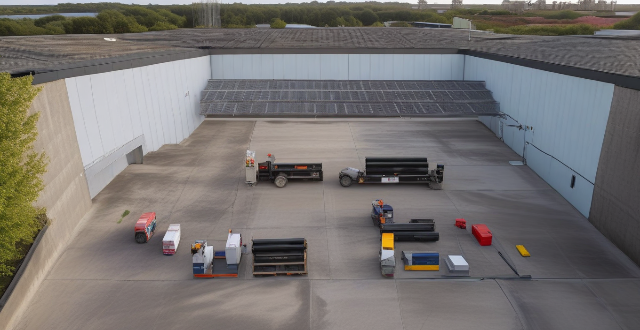
How can you maintain a lead-acid battery to extend its lifespan ?
Lead-acid batteries are commonly used in vehicles, UPS, and solar storage systems. To ensure their longevity, it's essential to maintain them properly. Here's how you can extend the lifespan of your lead-acid battery: prevent overcharging, avoid deep discharges, maintain proper fluid levels, keep the battery clean, and store properly when not in use. By following these maintenance tips, you can significantly extend the lifespan of your lead-acid battery and ensure reliable performance for years to come.

What is the best way to cook tempura batter ?
Tempura is a Japanese dish that originated in the late 16th century. It consists of seafood, vegetables, or other ingredients dipped in a wheat-flour batter and deep-fried. The key to perfect tempura lies in the preparation of the batter. Here are some tips on how to make the best tempura batter: Ingredients: - Vidalia Onions - These sweet onions are low in sulfuric compounds, which makes them easier to digest. They also have a lower fiber content than yellow or white onions, making them less likely to cause gas or bloating. - Garlic - Garlic is rich in antioxidants and has anti-inflammatory properties. It's also known for its immune-boosting benefits. - Ginger - Ginger has been used for centuries as a natural remedy for digestive issues. It can help relieve nausea and vomiting, reduce gas and bloating, and even alleviate symptoms of acid reflux. - Chicken Broth - Chicken broth is an excellent source of minerals like calcium, magnesium, and potassium. It also contains collagen, which is great for gut health. - Bone Broth - Bone broth is rich in amino acids like glycine and proline, which can help repair the gut lining and reduce inflammation. - Coconut Oil - Coconut oil contains medium-chain triglycerides (MCTs), which are easily digested and can provide quick energy for the body. It also has antimicrobial properties that can help support gut health. Preparation: 1. Chop your chosen vegetables into small pieces. This will ensure that they cook evenly and absorb the flavors of the broth. 2. In a large pot, heat up some coconut oil over medium heat. Add the chopped onions, garlic, and ginger, and sauté until they become fragrant and slightly softened. 3. Pour in the chicken broth and bone broth, then bring everything to a boil. 4. Once the broth is boiling, add in your chopped vegetables. Stir everything together so that the vegetables are fully submerged in the liquid. 5. Add salt, pepper, and any other desired seasonings to taste. Consider adding herbs like thyme or rosemary for additional flavor. 6. Reduce the heat to low and let the soup simmer for at least 30 minutes, or until the vegetables are tender and fully cooked through. 7. Ladle the hot soup into bowls and serve immediately. Enjoy the warmth and comfort of this delicious and gut-friendly vegetable soup!
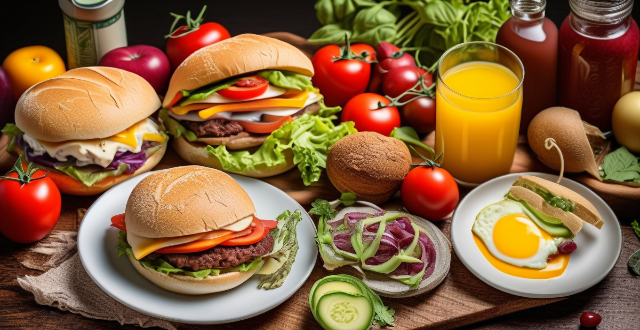
What are some good options for quick and easy vegetarian meals ?
Vegetarian meals can be quick and easy to prepare. Here are some options: stir-fry vegetables with rice or noodles, quinoa salad with roasted vegetables, vegetable soup or broth, veggie burgers with avocado and salsa, and pasta with pesto and cherry tomatoes. These meals can be customized based on preferences and what's available in the kitchen.
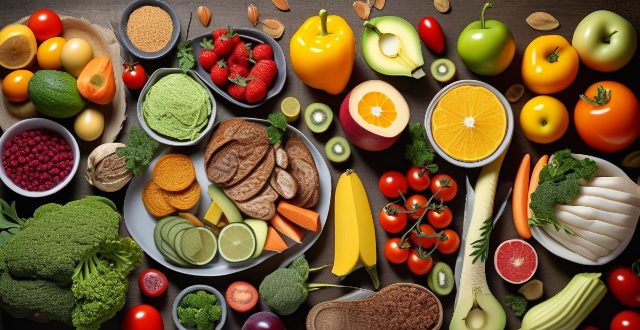
How do I incorporate more fruits and vegetables into my daily meals ?
Incorporating more fruits and vegetables into daily meals is crucial for a balanced diet, providing essential nutrients. To achieve this, start the day with fruit smoothies or salads, snack on vegetable sticks or fruit parings, include veggies in lunch and dinner through salads, stir-fries, and soups, and enjoy fruit-based desserts or healthy cookies. Plan ahead, prep fruits and vegetables in advance, and cook in bulk to simplify the process.

How does a lead-acid battery work ?
Lead-acid batteries work on the principle of converting chemical energy into electrical energy and vice versa. They consist of an electrolyte, plates, and separators. During charging, an external power source applies a voltage higher than the open-circuit voltage of the battery, causing lead sulfate on the positive plate to be converted back into lead dioxide and on the negative plate into metallic lead. During discharging, when a load is connected to the battery, lead dioxide on the positive plate is reduced to lead sulfate, and metallic lead on the negative plate is oxidized to lead sulfate. The electrons flow from the negative terminal of the battery to the load during discharging and from the positive terminal of the external power source to the positive plate of the battery during charging.

What are some healthy Italian pasta dishes ?
Italian cuisine is known for its delicious pasta dishes, but not all of them are healthy. Here are some healthier options that you can try: 1. Whole Wheat Pasta with Tomato Sauce 2. Zucchini Noodles with Pesto 3. Spaghetti Squash with Marinara Sauce 4. Pasta Primavera 5. Grilled Vegetable Pasta Salad 6. Mushroom Stroganoff 7. Seafood Pasta 8. Caprese Pasta Salad 9. Eggplant Parmesan 10. Vegetable Lasagna

What is the environmental impact of disposing lead-acid batteries ?
Lead-acid battery disposal has significant environmental impacts due to hazardous materials and waste management challenges. To mitigate these, strategies like recycling programs, proper handling, public awareness campaigns, and legislation/regulations should be implemented.

What are the advantages and disadvantages of lead-acid batteries ?
Lead-acid batteries have advantages such as cost-effectiveness, long lifespan, wide availability, recyclability, simplicity, versatility, low self-discharge rate, no memory effect, high energy density, and good performance in cold temperatures. However, they also have disadvantages including heavyweight, pollution concerns, low energy efficiency, short cycle life, maintenance requirements, overcharging issues, sulfation risk, corrosion risk, limited power output, and size limitations.

Are there any alternatives to lead-acid batteries for energy storage ?
Lead-acid batteries have been a popular choice for energy storage due to their cost-effectiveness and reliability. However, there are several alternatives available that offer different benefits depending on the specific application. Some of the most common alternatives include lithium-ion batteries, nickel-cadmium batteries, sodium-sulfur batteries, and flow batteries. Each of these options has its advantages and disadvantages, such as higher energy density, longer lifespan, faster charging capabilities, and potential safety risks. By considering factors such as energy density, lifespan, maintenance requirements, and environmental impact, you can choose the best option for your energy storage needs.

What are some easy and delicious vegetarian recipes for beginners ?
Vegetarianism is a popular dietary choice, but it can be daunting for beginners to find easy and delicious recipes. Here are some simple vegetarian dishes that are perfect for those new to plant-based eating: ## **1\. Roasted Vegetable Pasta** This colorful pasta dish is packed with flavor and nutrition. **Ingredients:** * 1 cup cherry tomatoes, halved * 1 zucchini, sliced * 1 red bell pepper, sliced * 1 yellow onion, chopped * 2 garlic cloves, minced * 8 oz whole wheat pasta * 2 tbsp olive oil * Salt and pepper to taste * Fresh basil leaves for garnish **Instructions:** 1. Preheat oven to 400°F (200°C). 2. Toss the vegetables in olive oil, salt, and pepper. 3. Arrange the vegetables on a baking sheet and roast for 25 minutes or until tender. 4. Cook the pasta according to package instructions. 5. In a large bowl, combine the roasted vegetables and cooked pasta. 6. Garnish with fresh basil leaves and serve warm. ## **2\. Chickpea Curry** This creamy and flavorful curry is perfect for beginners. **Ingredients:** * 1 can chickpeas, drained and rinsed * 1 onion, diced * 2 garlic cloves, minced * 1 tbsp curry powder * 1 tsp ground cumin * 1 tsp ground coriander * 1 tsp turmeric * 1 can coconut milk * Salt to taste **Instructions:** 1. Heat a pan over medium heat and add a tablespoon of oil. 2. Sauté the onion and garlic until soft. 3. Add the spices and cook for another minute. 4. Stir in the chickpeas and coconut milk. 5. Bring to a simmer and cook for 10 minutes or until the sauce thickens. 6. Season with salt and serve hot with rice or naan bread. ## **3\. Lentil Soup** Lentil soup is hearty, nutritious, and easy to make. **Ingredients:** * 1 cup green lentils, rinsed * 1 onion, diced * 2 garlic cloves, minced * 2 carrots, diced * 2 stalks celery, diced * 4 cups vegetable broth * 1 bay leaf * Salt and pepper to taste

What prenatal vitamins are recommended for women trying to conceive ?
Prenatal vitamins are crucial for women trying to conceive, as they provide the necessary nutrients for a healthy pregnancy and support the development of a growing fetus. Some recommended prenatal vitamins include folic acid, iron, calcium, vitamin D, and multivitamins with folic acid. By ensuring adequate intake of these essential nutrients, women can increase their chances of having a healthy pregnancy and a healthy baby.

How can I prepare a quick and tasty soup ?
In this text, the author provides a simple and quick recipe for preparing a tasty soup at home. They detail the ingredients needed, including olive oil, onion, garlic, carrots, celery, zucchini, vegetable broth, white beans, spinach, salt, pepper, and fresh herbs for garnish. The instructions are broken down into six steps: sautéing the vegetables, adding broth and beans, simmering, adding spinach, seasoning, and garnishing before serving. The author also offers tips for variations, adding protein, and spicing up the soup. Overall, the text emphasizes the versatility and nutritional value of soups while providing a straightforward recipe for a delicious homemade option.
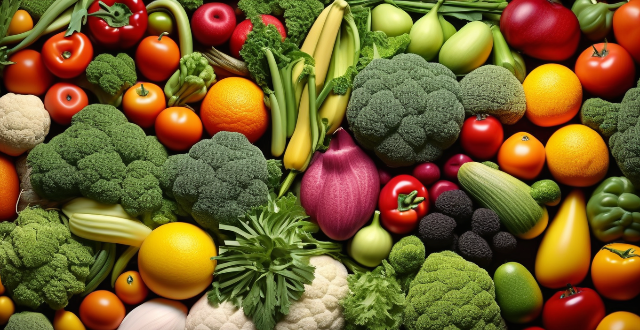
How can I make sure my fruits and vegetables are organic ?
To ensure your fruits and vegetables are organic, buyTo ensure your fruits and vegetables are organic, buy stores, grow your own using avoid contamination by washing produce thoroughly, and educate yourself on the latest research and news about organic farming.

What are some time-saving tips for chopping vegetables quickly and efficiently ?
Chopping vegetables can be a time-consuming task, but with these tips, you can save time and make the process more efficient. Let's dive into some helpful techniques: Use a Sharp Knife: Maintain Your Knives by regularly using a honing steel or getting them professionally sharpened. Use the right knife for the job. For example, use a chef's knife for larger vegetables and a paring knife for smaller ones. Peel Smart: Not All Vegetables Need Peeling. Some vegetables, like carrots and potatoes, have edible skins that add nutrients and flavor. Only peel if necessary. Use a vegetable peeler for quick and even peeling, or for soft-skinned vegetables like tomatoes, a simple scoring and peeling method can be faster. Cut Once, Use Multiple Times: Prep Ahead of Time when you have time, prep extra vegetables and store them in airtight containers for future use. When cooking multiple dishes that use the same vegetable, chop all at once and divide as needed. Uniform Size Matters: Aim for uniform cuts so that vegetables cook evenly and look neat when plated. Take time to practice precise cutting; it will speed up your chopping in the long run. Use a Food Chopper or Mandoline: For large quantities, an electric food chopper can save significant time. A mandoline slicer quickly produces uniform slices or juliennes, especially useful for vegetables like cucumbers or potatoes. Clean As You Go: Keep your workspace tidy by cleaning your cutting board and utensils as you go to avoid clutter that can slow you down. Have a designated area for scraps and waste to keep your chopping area clear. Learn to Chop Properly: Watch tutorials or take a cooking class to learn proper chopping techniques, which can significantly improve speed and safety. Make sure you're holding your knife correctly; grip the handle towards the base for more control and force. Multitask with Safety: While it's good to multitask (like starting to boil water while chopping), ensure that you are not compromising safety by rushing or being distracted. Prepare other ingredients that don't require heat while vegetables are roasting or simmering. Work with Wet Knives: Keeping your knife wet with water can help slice through sticky or wet foods like fresh fruits more easily. If you need thin, uniform slices, dip your ruler in water before using it to measure thickness while slicing. Invest in Quality Tools: Invest in non-slip, durable cutting boards that are gentle on your knives. Consider investing in other kitchen tools like a garlic press, herb stripper, or apple slicer to speed up specific tasks.
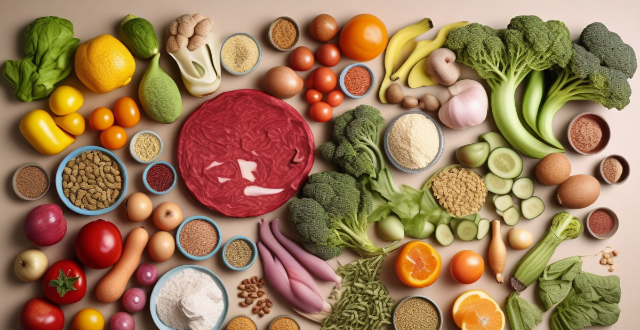
How can a healthy diet improve women's reproductive health ?
A healthy diet is crucial for women's reproductive health, affecting fertility, pregnancy, and menstrual health. Essential nutrients like folic acid and iron support conception and hormone regulation. Calcium, vitamin D, and magnesium can reduce PMS symptoms, while iron-rich and antioxidant-rich foods improve period health. During pregnancy, nutrients like folic acid and iodine are crucial for fetal development, and fiber and hydration maintain maternal health. A balanced diet can also prevent gynecological issues like fibroids and ovarian cysts. Additionally, weight management and mental health through a healthy diet promote overall well-being. Consulting healthcare professionals for personalized dietary advice is recommended.

What are some go-to vegetarian or vegan home-cooked options ?
Vegetarian and vegan home-cooked options are not only delicious but also healthy and environmentally friendly. Here are some go-to vegetarian or vegan home-cooked options: 1. Lentil Soup: A hearty and nutritious option for vegetarians and vegans. It is easy to make and can be customized with different vegetables and spices. 2. Chickpea Curry: A flavorful and filling dish that is perfect for vegetarians and vegans. It is made with chickpeas, vegetables, and spices. 3. Quinoa Salad: A healthy and versatile option for vegetarians and vegans. It can be made with different vegetables and dressings.